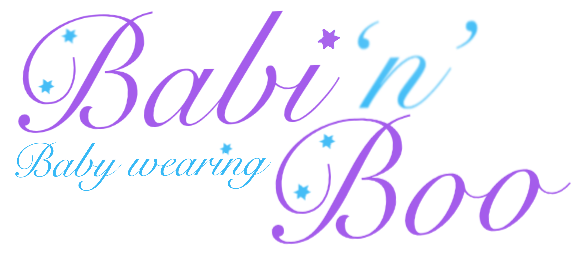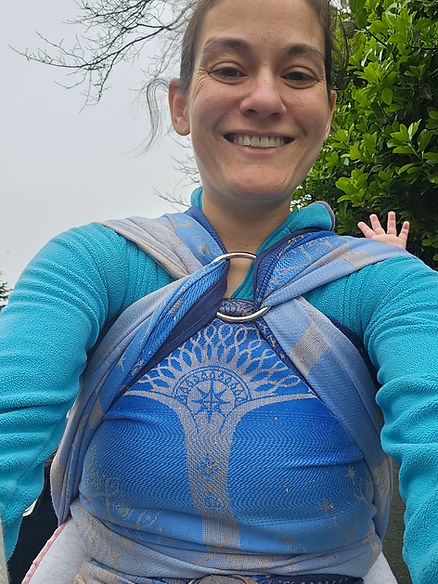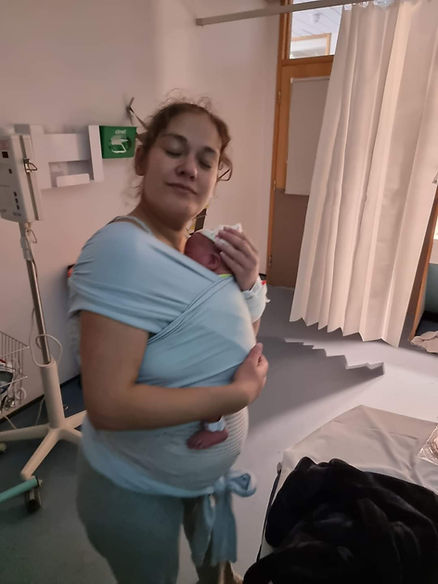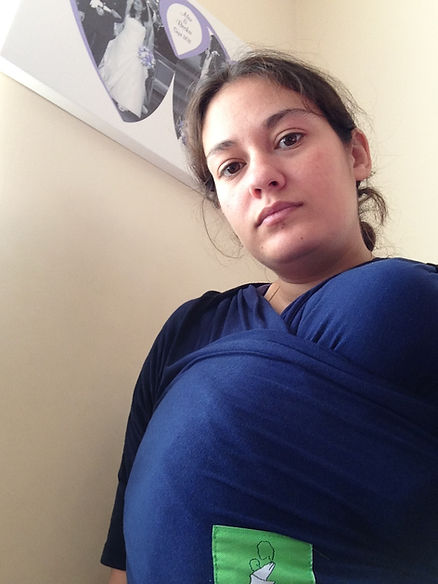What is the difference between all the carriers and slings available? Which one will work best for me?
Every day on social media I see these questions asked. The original poster is often flooded with information they didn’t ask for and the world of babywearing suddenly becomes confusing and overwhelming!
Although there is no definitive answer to what is most suitable for you without a visit to your nearby sling library, which you can locate here, and experimenting with different options, this guide aims to provide you with an overview of the available choices. Some options may be missing as they’re no longer available to buy brand new – such as the close caboo.
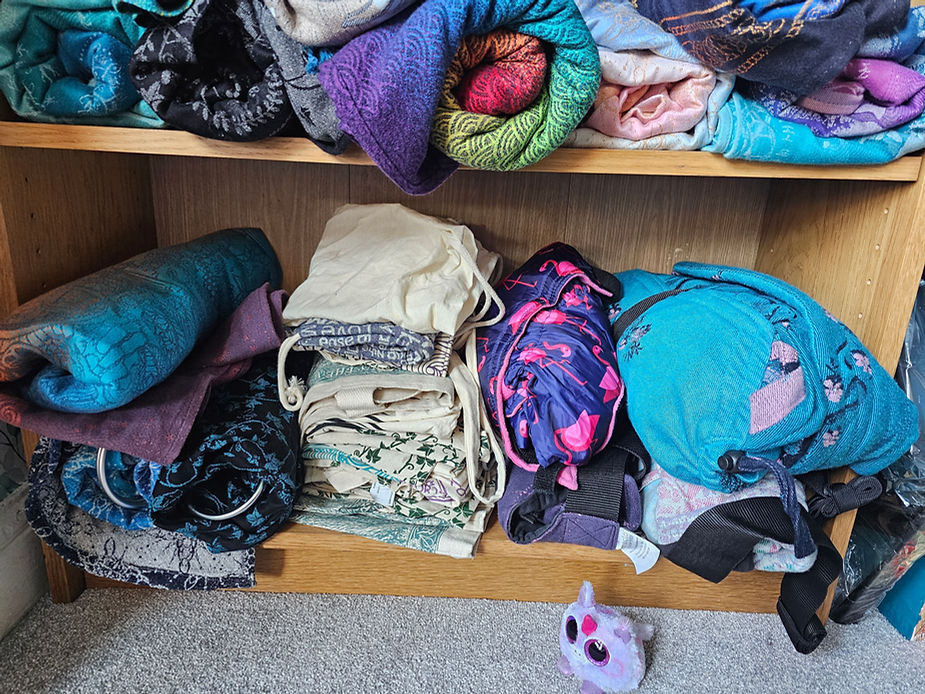
Carriers and slings are like jeans; they come in a variety of sizes, styles, colours and patterns. Relying on recommendations without any professional advice can be costly. It would be similar to me asking for recommendations on jeans and being told that next long bootcut jeans are super comfy and will fit really well, so I go and buy them, and they do fit fantastically around the waist, but I discover at 5’3 that long jeans probably weren’t a great idea! Whilst this analogy is rather basic the principle is there – yes, I could have given more information when asking for recommendations, but then I might have been advised to buy newlook jeans, which I happen to know I don’t really get along with, but I know that from having tried them on in the shop – and that’s where a sling library really comes into its own. It offers you the opportunity to try slings and carriers without the costly price tag.
However, what can you do if you can’t get to the local sling library, or there isn’t one? How do you narrow down your options? Hopefully this post will help.
What types of carriers are there?
The types of carriers and slings I’m going to look at in this post are detailed below:
Stretchy Wraps
Stretchy wraps are a a single long peice of material that you wrap around you and your baby. See this post for more detailed information on stretchy wraps.
There are two types of stretchy wrap a 1-way and a 2-way, both types are tested from around 7lbs – 20lbs, though some brands, such as Izmi, have undergone testing for lower birth weights and state they can be used from 5lbs. Regardless of which type of wrap you choose you will have three layers over baby, two cross passes, which should be spread from knee to knee and up to the nape of the neck and a wrap pass that goes from under baby’s knees up to the nape of their neck. This third pass is essential to prevent baby from falling out.

They are only suitable for front and hip carries in which the baby is facing the wearer. Many people will move on from a stretchy wrap to something else when their baby is around 4-6 months old.
You can usually pick up good quality stretchy wraps second hand, which ofsets the cost against the longevity. However, even brand new stretchy wraps are reasonably priced.
A stretchy wrap is a great option for a newborn, especially those with low birth weights with consultant support.
Woven Wraps
Woven wraps are also a long piece of material that you wrap around yourself and your baby. They are suitable from newborn to big kid and can be used on the front, back and hip.
Woven wraps are arguably the most adaptable carrier on the market, they come in a variety of sizes, blends, colours and patterns – there truly is something for everyone and every age!
However, thay also come with a significant learning curve which can be offputting to a sleep deprived new parent! Conversely, once you have the hang of it wrapping and experimenting can be great fun!

Anybody can make most sizes from a size 4 upwards work for them, you just need to adjust the carry that you use.
For a begninner I would recommend starting with a lightweight wrap in your base size or shorter and an easycare blend. However, if you’re looking at wrapping a toddler a lightweight cotton wrap may not be the most comfortable.
Carries will generally be described as a base+ or – carry. For more about working out your base size and woven blends etc see this post.
Buckle Carriers (AKA full buckle carriers or Semi- Structured Carriers)
This section can be a bit of a minefield as there are so many options – how do you know what to pick? What is suitable for your child? What is likely to work for you? This post goes into more detail about some of the most common brands and their features. However, to give you a starting point if interested in a buckle carrier this section should be informative.
Buckle carriers have a buckle waist belt, with straps that can be crossed or form a H shape on your back and buckle up under your arms. There are a variety of options here, with apron and waterfall style carriers, carriers suitable for newborns and those aimed at toddlers. Full buckle carriers are the only carriers in which you will find front facing outward positions recommended by the manufacturer.
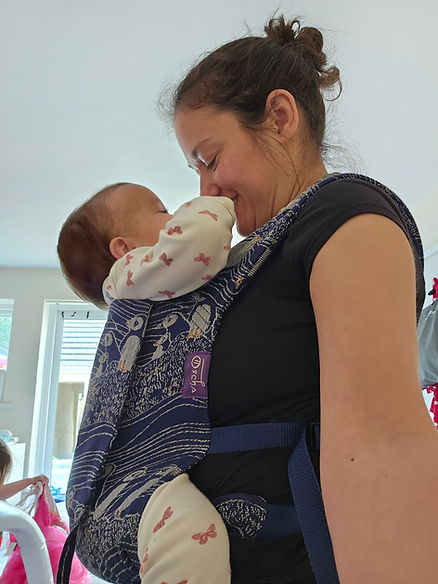
As a quick starting point many carriers claim to be suitable from newborn, but are difficult to get a good fit with. However, the Mamaruga Zen Sling, Ergobaby Embrace and Oscha Bairn do seem to be good options for newborns, and with the exception of the embrace do offer a good longevity if purchased for a newborn. None of these options offer forward facing out.
Some buckle carriers work well for newborns with some adjustments or with an insert, such as the IzmiBaby, Integra size 1, Kahubaby and some ergobaby carriers. The beauty of the Izmi and integra carriers is that they are thin and soft against your new baby’s skin, with minimal padding.
If your child is over 4 months most baby size buckle carriers will give you a good fit, so it’s just deciding if you would like to opt for a carrier with lots of padding, like the ergobaby 360, or a thinner apron style carrier like the Kahubaby, you will also want to consider if forward facing is an option that you really need, and bear in mind that it is only recommended for short periods of time after your child is sitting independently and only until around 12 months. Most buckle carriers will offer the options of front facing parent, hip and back carries as standard. If you are looking for a toddler buckle carrier, many of the already named brands also offer toddler and preschool sizes.
Half buckle carriers
Half buckle carriers are carriers that have a buckle waist band attached to a panel in which baby sits with wrap type straps that you wrap around your body and baby and tie off to secure. They offer front parent facing, hip and back carrying positions.

They are usually made out of woven wrap fabric, and you may have the choice of full wrap straps as pictured below or padded to wrap straps, which is more similar to a standard buckle carrier. As with buckle carriers, they do come in a variety of sizes, with some more adjustable than others. However, due to how soft they are they are easily adjusted to get a good fit for smaller babies and so can justifiably claim to be suitable from newborn. Many are also adaptable to much bigger children too.
Some brands that make halfbuckle carriers are: Didymos Didyklick, Oscha Cairis, or the LennyLamb LennyHybrid. There is also the option of buying a woven wrap and having it professionally converted, which will also give you more scope on the features you include.
Meh Dai
A Meh Dai carrier can be used from newborn, and like a half buckle, is easily adaptable. It is usually made out of a woven fabric, and can be used on the front, hip and back.

It is used similarly to a half buckle, but instead of a buckle waist band it has fabric straps that you tie around your waist.
This is a great option for pregnant women who would like to continue carrying, but for whom structured waistbands have become uncomfortable.
Meh-Dai carriers may also be described as a bei-dai or formally a Meh-Tai, some may also come with a ring fastening option at the waist.
Onbuhimo
An Ombuhimo is a traditional Japenese carrier that has become incredibly popular recently. Traditionally it offers a high back carry for children who have good torso control.
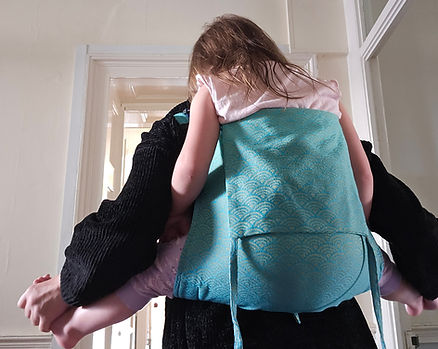
An ombuhimo has no waist band and the child’s legs fit through the straps, with their arms over the top of the panel. Most come with a chest strap to help prevent the straps from slipping down.
Whilst the ideal height is to have the child with their shoulders level with yours, a slightly lower carry is still safe. Some brands have tested their ombuhimos for younger children in a front carry poisiton too, so if you are wanting this as an option, do look around!
Ring Slings
Ring slings are a good option for newborns and big kids alike, although, as with woven wraps the blend you chose for your ring sling could impact how comfortable it is with a toddler. See this post (coming soon) for information on woven wraps and their blends.
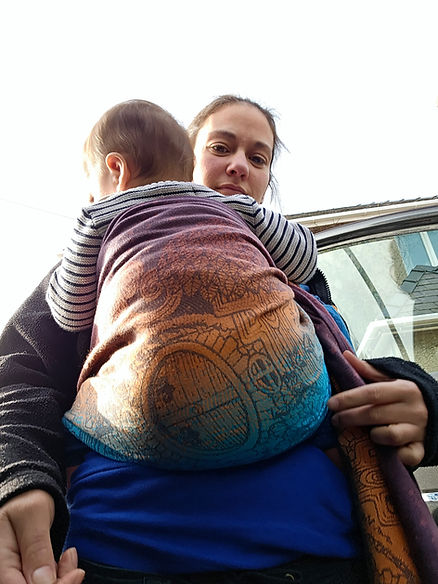
Ring slings offer a one shoulder carry and can be used front off centre for a newborn, on the hip, or if more eperienced, on the back. They are suitable for all ages and one size will fit all children, generally.
They are quick to set up and can be worn under a coat ready for those quick up and downs. They are a great option for carrying a baby from the car to school on a school run, or for toddler ups and downs when they’re not sure what they want to do!
Summary
Whilst I’ve done my best to cover the most common options here there are options I haven’t covered, and if you would like more information on those, please feel free to connect with me! Furthermore, I haven’t gone into depth on all of the options available, though more indepth posts will be coming soon!
All of the options I have covered are available to hire from the library. If you would like a 1:1 consultation to work out what works best for you, you can book that here.
Finally, as a non-profit library we rely on donations to expand our collection. If you would like to help us out please feel free to donate through here.
